Key takeaways:
- The resilience of legendary athletes, like Serena Williams and Michael Jordan, teaches us that setbacks can be opportunities for growth and self-improvement.
- Understanding key mindsets, such as Kobe Bryant’s “Mamba Mentality” and Simone Biles’ openness about mental health, underscores the importance of perseverance, self-belief, and emotional strength in personal challenges.
- Translating lessons from athletes into daily life emphasizes the significance of teamwork, humility, and continuous learning for achieving personal and professional success.

My inspiration from legendary athletes
When I think about legendary athletes, I’m reminded of how their stories resonate with my own struggles and triumphs. I remember my first big loss in a competition; I felt like giving up. Watching Serena Williams bounce back from her setbacks taught me the importance of resilience. How does one keep pushing through when the odds are stacked against them? For me, the answer lies in embodying the spirit of athletes like her.
There was a moment during my training when I felt completely overwhelmed and unsure, but then I recalled Michael Jordan’s famous saying that “I’ve failed over and over and over again in my life.” That quote became a mantra for me. It’s remarkable how the mindset of these athletes becomes a source of strength. Have you ever felt like you weren’t good enough? I certainly have, but knowing that even the greats faced setbacks inspired me to keep going, reminding me that failure isn’t the end; it’s a stepping stone.
Watching Muhammad Ali’s unwavering belief in himself during his career pushed me to pursue my goals with the same fervor. I often think about how he declared, “I am the greatest,” long before he won any titles. Can you imagine the confidence it takes to verbalize such a belief? His journey instilled in me the idea that self-affirmation is key. I began telling myself that I, too, had the potential to achieve my dreams. So, what would it look like if we all embraced that kind of self-belief?
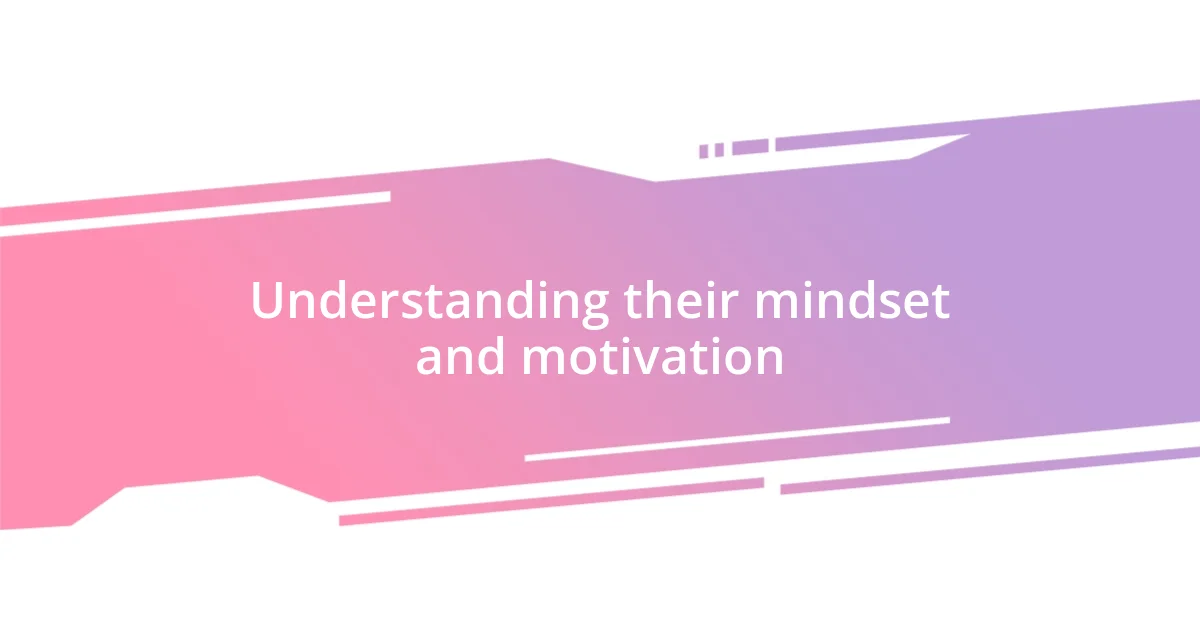
Understanding their mindset and motivation
Understanding the mindset of legendary athletes is truly enlightening. Take Kobe Bryant, for instance. I recall how his “Mamba Mentality” inspired me during late-night study sessions. It’s about relentless pursuit and discipline. When I felt like quitting, I pictured him pushing through pain. It motivated me to keep going, reminding me that hard work often outweighs talent.
Moreover, I’ve often embraced the power of visualization, much like how athletes prepare mentally before a big game. I remember standing at the starting line of a race, imagining myself crossing the finish line first. That mental exercise can be a game-changer. It helps break barriers and cultivates a positive mindset. Athletes like Usain Bolt have emphasized this, showing how visualization plays an integral role in their success.
Lastly, I’m moved by the tenacity of athletes like Simone Biles. Her willingness to speak about mental health resonates deeply. I remember a time I felt anxious before a presentation, fearing judgment. Biles teaches us that acknowledging our struggles is part of the journey. By understanding our vulnerabilities, we can channel them into our drive to succeed. It’s this mindset that often sets legends apart from the rest of us.
| Athlete | Mindset/Motivation |
|---|---|
| Kobe Bryant | Mamba Mentality: relentless pursuit and discipline |
| Usain Bolt | Visualization: the power of mental preparation |
| Simone Biles | Vulnerability: recognizing and channeling struggles |
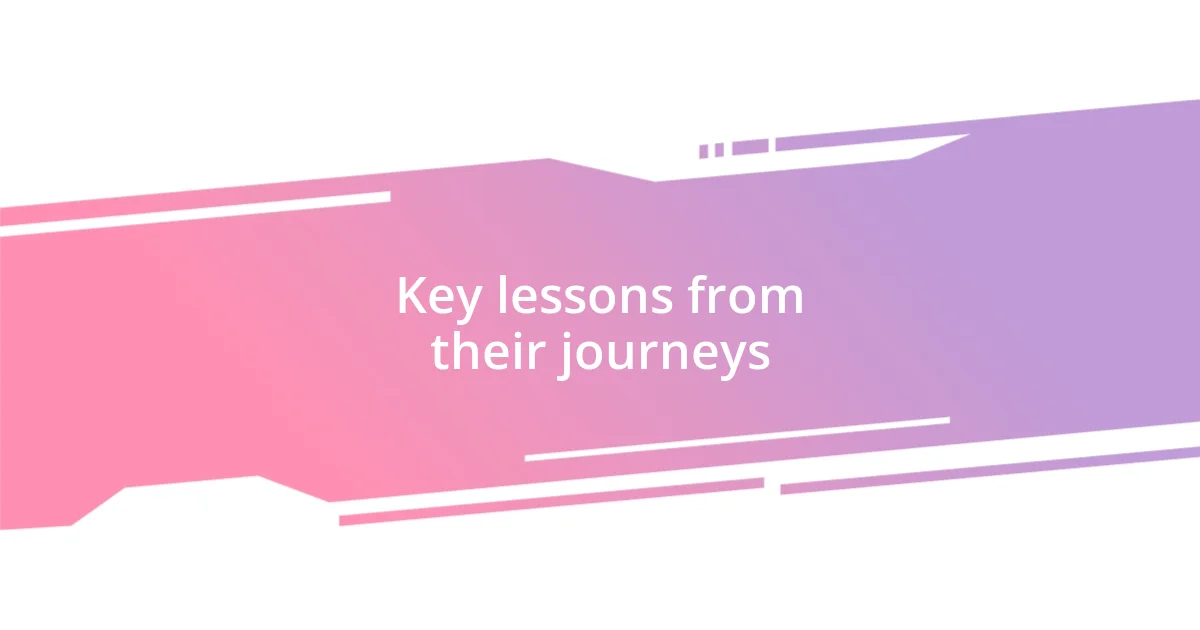
Key lessons from their journeys
There’s so much to learn from the journeys of these legendary athletes that can apply to our own lives. One key lesson I’ve internalized is the notion of perseverance in the face of adversity. I remember a time when I faced a daunting challenge at work, feeling as if I were drowning under pressure. I found solace in the recollection of Roger Federer, who faced criticism after difficult losses. His ability to maintain grace, focus, and drive taught me that it’s not just about winning; it’s about how you choose to respond and grow from those experiences.
- Perseverance: Continuing to push forward despite setbacks.
- Self-belief: Trust in your capabilities, as seen in Ali’s confidence.
- Continuous learning: Every failure is an opportunity to improve, like Jordan’s journey.
- Emotional strength: Understand that vulnerability can lead to growth, inspired by Biles.
These lessons create a rich tapestry of insights that can guide us in our personal and professional journeys. Engaging with these stories always reminds me that success isn’t a straight path; it’s filled with curves, obstacles, and moments of self-reflection.
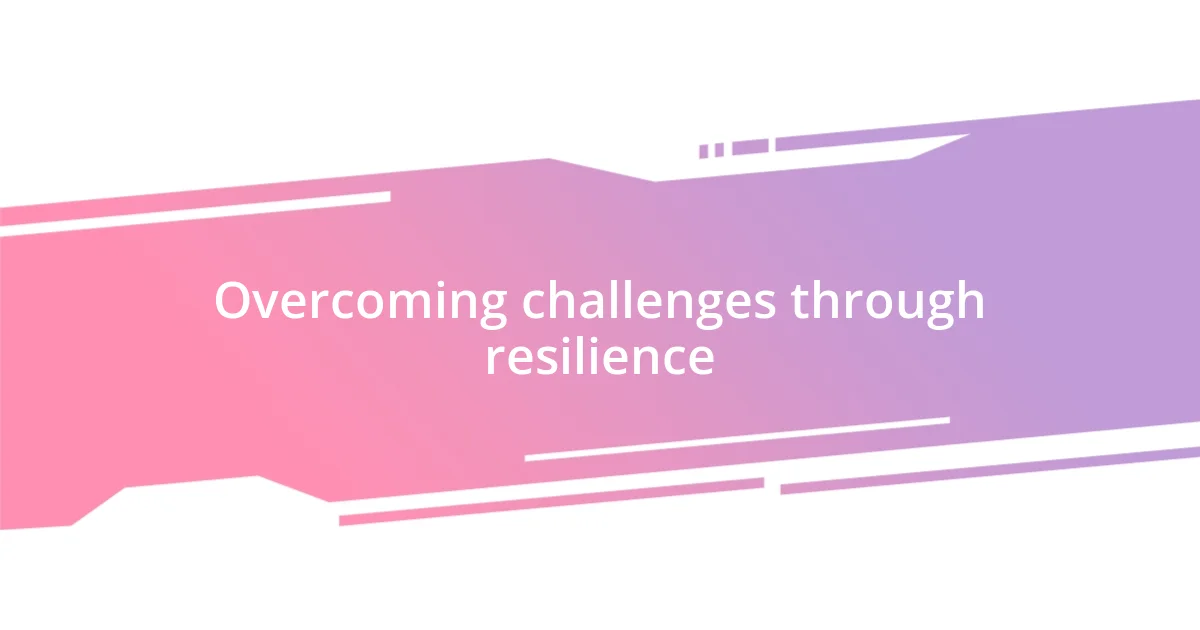
Overcoming challenges through resilience
Resilience is the heart of any legendary athlete’s journey. When I think about Serena Williams, I can’t help but admire how she faced setbacks with unwavering spirit. I remember watching one of her matches where she had to fight back after losing the first set. It reminded me of a personal challenge—when I bombed a crucial exam. Instead of giving in to despair, I channeled my frustration into studying harder, echoing that same determination Williams displayed on the court.
It’s fascinating how resilience transforms obstacles into opportunities. Take Michael Jordan, for example. After being cut from his high school basketball team, he didn’t let that define his future. Instead, he used it as fuel to work tirelessly on his skills. I’ve had moments where rejection felt crippling, like when I was passed over for a promotion. It stung, but I took a page from Jordan’s book and focused on improving my skills. That resilience not only built my character but ultimately led me to even better opportunities.
Remember the stories of athletes returning stronger after injuries? That’s resilience in its purest form. I once sprained my ankle right before a marathon I had trained for months to run. It felt devastating at first, but rather than giving up, I shifted my focus to recovery and mental preparation. Inspired by athletes like Tom Brady, who came back from serious injuries better than ever, I learned that setbacks don’t define us—they refine us. It’s this spirit of resilience, embodied in legends, that can guide us through our own challenges. How do you rebuild after a setback in your life?
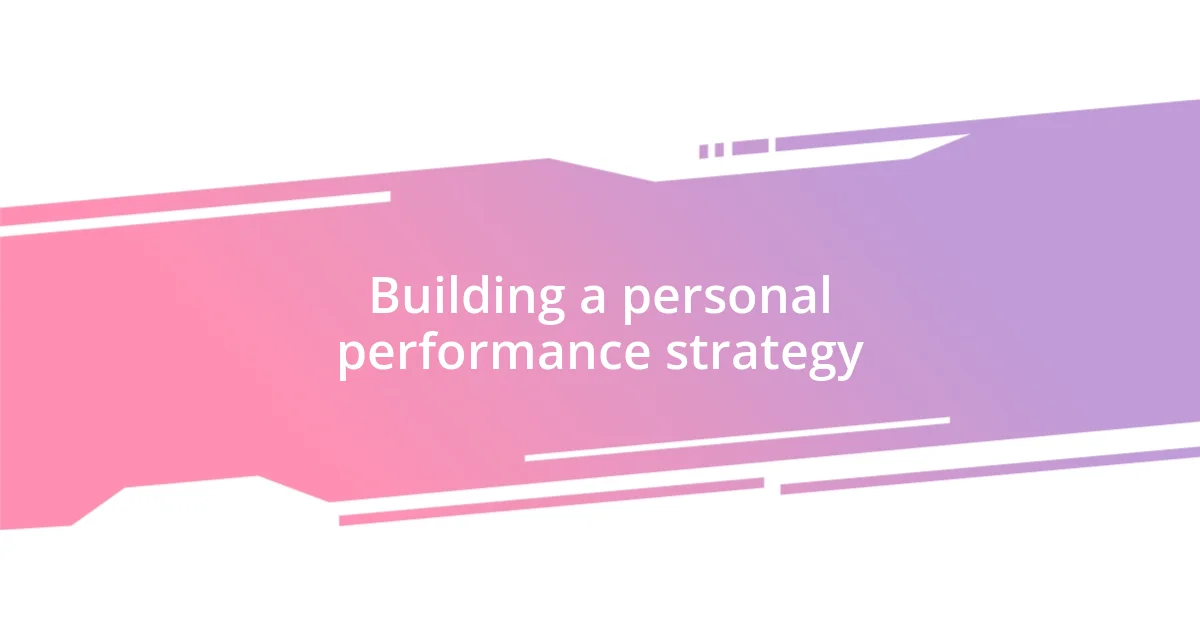
Building a personal performance strategy
Building a personal performance strategy often starts with self-belief. I remember a time preparing for a significant certification exam; I felt overwhelmed by doubts. However, reflecting on Muhammad Ali’s unwavering confidence motivated me to trust in my abilities. His mantra, “I am the greatest,” echoed in my mind, pushing me to shift my perspective from fear of failure to belief in my potential. How often do we let self-doubt sabotage our progress?
Another crucial aspect is continuous learning. I’ve always admired how Kobe Bryant approached every game as an opportunity to improve—he dissected his performances, even after a win. There was one project at work where I initially floundered despite my best efforts. Instead of wallowing in disappointment, I sought feedback and dove into research, eager to learn from my mistakes. That iterative process taught me that setbacks don’t signal failure; they’re simply lessons waiting to be uncovered.
Lastly, emotional strength can’t be overlooked. Watching Simone Biles’ vulnerability in sharing her mental health struggles resonated with me deeply. There was a time I had to confront my feelings in a high-pressure situation, and acknowledging my emotions was pivotal. It’s easy to think we should always be invulnerable, but embracing our human experience—like Biles did—can lead to profound personal growth. How do you handle your emotions when faced with adversity? Embracing them might be the key to your own personal strategy.
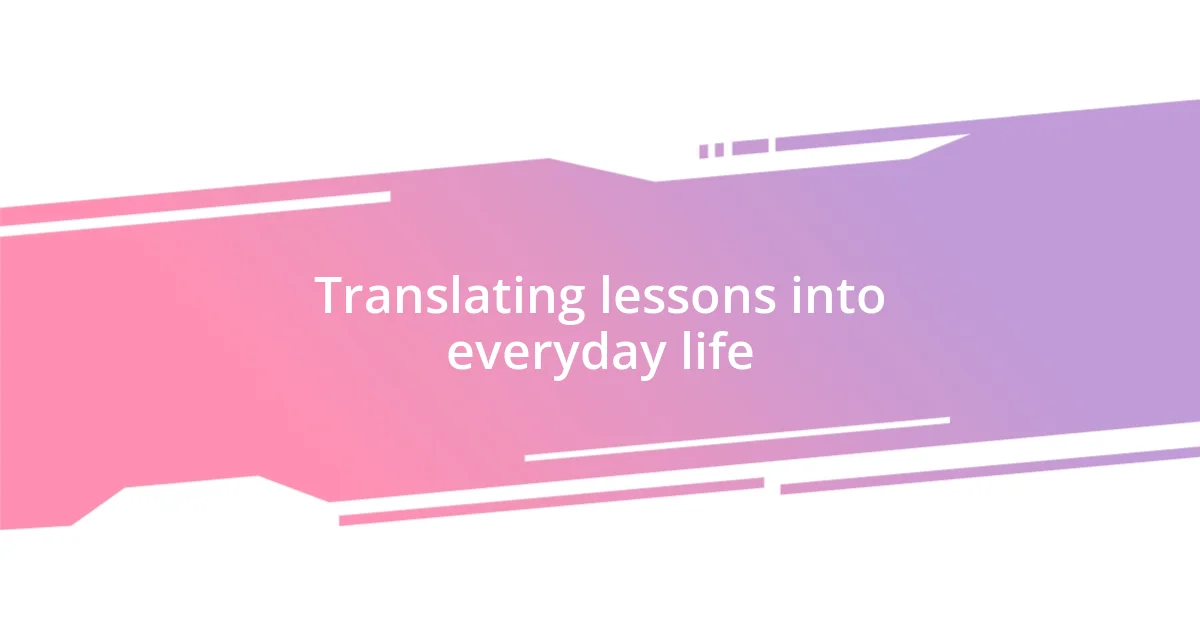
Translating lessons into everyday life
Translating lessons from legendary athletes into everyday life can be transformative. I remember the day I decided to take up running after watching Usain Bolt dominate in yet another race. His sheer joy and passion fueled my own desire to push my limits. I started small, setting personal goals that felt almost playful, not a chore. Each step became a lesson in endurance, reminding me that even the fastest sprinter started with a single stride.
One fundamental lesson, I believe, is the importance of teamwork. Observing athletes like LeBron James, I realized that greatness doesn’t just stem from individual talent—it flourishes through collaboration. I once worked on a group project where our personalities clashed. Instead of letting egos take over, I took inspiration from LeBron’s ability to uplift those around him. By fostering open communication and encouraging each teammate’s strengths, we succeeded together. Don’t you think that sometimes the best victories are those shared with others?
Lastly, humility is a virtue that resonates deeply with me, particularly after watching athletes graciously accept both wins and losses. I recall a situation where I received recognition at work but didn’t take the time to acknowledge my team’s efforts. It struck me then, much like how tennis star Rafael Nadal emphasizes respect for opponents, that valuing those around us builds a stronger foundation. Reflecting on this, I’ve learned to lift others as I climb, ensuring that my successes are also theirs. How do you express gratitude in your own victories?














